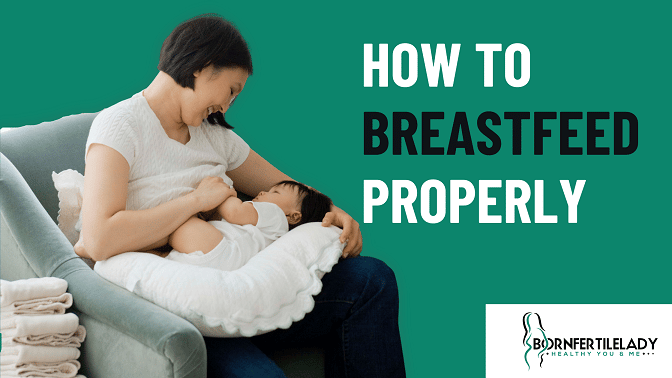The breastfeeding latch defines the infant’s attachment to the breast. It is crucial to breastfeeding since a good latch promotes high milk production and eases nipple discomfort for the mother.
But what occurs if your baby doesn’t latch properly? This may result in inadequate milk transfer to the baby and may soon lead to painful and cracked nipples.
You had to be concerned, right? because of the aches and discomforts brought on by improper latching?
Never fear, new mama, even if your baby doesn’t latch properly, we are here to show you how to go about it.
Read Also: Foods that Increase Breast Milk in Kenyan. Get Your Milk Back!
What is proper latching in breastfeeding
Latching is crucial to nursing because it helps move milk from the mother’s breast, which contains vital nutrients the infant needs, to the child.
For your baby to latch properly for milk production, secretion, and expression, the areola around the nipple must also be darkened during pregnancy.
This darkened areola makes it possible for your baby to latch not only on the nipple but also on the areola.
Even though there are many tiny openings in the nipple, breast milk doesn’t start to flow until your baby’s gums press against the areola and the milk sinuses beneath it.
If not, neither new milk production nor milk letting down (flowing out) will occur.
Tips for getting your infant to latch properly
When your infant’s chin and the tip of her nose are in contact with your breast, you’ll know you’ve got a good latch.
Also, rather than having their lips tucked in, hers will be flaring out (like a fish). Your baby will naturally start suckling in the rhythmic suck-swallow-breath sequence as soon as you have the proper latch.
In addition, Here are some of the tips on getting your baby to latch properly.
- Hold your breast with your free hand after your infant is in a comfortable nursing posture.
- At the point where your baby’s nose will meet your breast, place your thumb between your nipple and areola. Your baby’s chin should touch the breast where your index finger is positioned.
- Compress your breast just enough to make it more resemble your baby’s mouth.
- Bring your infant to your breast, and stroke her cheek to trigger the rooting reflex, causing her mouth to turn toward you. Tickle her lips with your nipple until her mouth is open wide (like a yawn).
- Bring her quickly to the breast, allowing her to suck your nipple and areola into her mouth, without shoving or squishing her head. Even if your areola is huge, she won’t be able to fit the entire thing in her mouth; but, as long as she manages to obtain a decent portion of it, everything will be OK.
Sign of bad latching and How to avoid it
Some of the signs of bad latching during pregnancy include:
- Nipple soreness
- Clicking sound
- Bruises on/near the nipple and areola
- Chewing, rooting, and gaping during breastfeeding
1. Nipple soreness

Nipple soreness while nursing is a sign that something is wrong.
This indicates that instead of gouging the areola, the infant is probably gnawing on your breast.
The remedy: Try again when you unlatch (release the suction by inserting your finger into the corner of her mouth).
2. Clicking sound

Also, if you hear clicking sounds, your infant is probably merely sucking on his or her breast and isn’t fully latched on. Restart by unlatching one more.
3. Bruises on/near the nipple and areola
Sometimes a baby can be so eager to suck that she will latch onto any portion of the breast, entirely missing the target, and she will keep sucking even if no milk comes out.
As a result, she will leave you with a painful bruise on your adorable breast because of hunger.
That innocent tiny mouth must be unlatched and redirected to the nipple and areola.
4. Chewing, rooting, and gaping during breastfeeding
Your baby is probably getting a mouthful of breast and air instead of milk if she is moaning, chewing, rooting and gaping, going crimson, or making clicking noises. Release the baby’s hold, then start lip-ticking again to encourage the infant to latch on with the nipple and the areola in the mouth.
Read Also: Can a Girl Get Pregnant if a Boy Touches her Breast With Mouth? 6 signs of pregnancy.
In conclusion
There might be a few tries during breastfeeding and one of them is the way the baby will suck air instead of breast milk but never worry, very soon she will master the act of breastfeeding and latching and the journey will become a happier one.
One of the first things you should also learn to make this journey enjoyable is how to be comfortable with your sitting position because changing positions unnecessarily can also result in soreness and breast pain during this journey
Some of the beautiful nursing positions you can use for breastfeeding are cross-over, football hold, laid-back, cradle hold, and side-lying.
Congratulations on your new journey.
